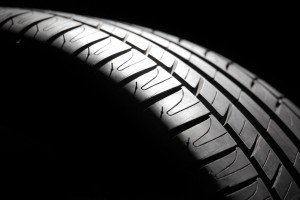
Type
Tire type refers to what kind of car that set of tires will fit on. There are passenger (p), light truck (LT), temporary spare (T), and special trailer (ST) types of tires. You can always identify the type of tire your car needs based off the number on your tire. The letters P, LT, T, and ST will precede the numbers on the side of your tire.
Width
Tire width is also known as section width in the automotive industry. The width is measured in millimeters from the widest point on the outside wall to the widest point on the inside wall. You can always find the tire width on your tire by the number directly following the P, LT, T, or ST and before the backslash(/) on the tire.
Aspect Ratio
Aspect ratio refers to the proportion of the tire width and the sidewall height of the tire. The lower aspect ratio a car has means the better cornering for your ride. You can find the percentage of your aspect ratio following the backslash on your tire.
Construction
There are three types of construction of a tire. Radical (R) construction means that inside the tires, the cords of the carcass piles radiate directly across. Diagonal (D) construction means the cords are crossed to generate more friction. Belted (B) construction means the cords are belted. This is represented by either an R, D, or B following the aspect ratio on your tire.
Wheel Diameter
This is pretty straightforward. Wheel diameter is the diameter of the tire that the tire will fit. This number follows the Construction letter of either R, D, or B and precedes the space break on your tires in NH.
Load Index
A load index is another measurement system. The load index measures the largest possible load a car can carry based on its maximum rate of inflation. A load index chart can show you how much your vehicle can move based on the number following the space break on your tire.
Speed Rating
Aside from getting pulled over for a speeding ticket, the speed rating of a car is another reason not to put the pedal to the metal. The speed rating on a scale from A to Y, or higher to lowest, tells you the maximum speed your car can safely drive. The final letter on your tire represents the speed rating.
For Quality Tires in NH, Visit Gurney’s Automotive!
When looking for tires in NH, look no further than Gurney’s Automotive Repair. They’ll have what you need or order it for you. Contact them today or visit them online.


